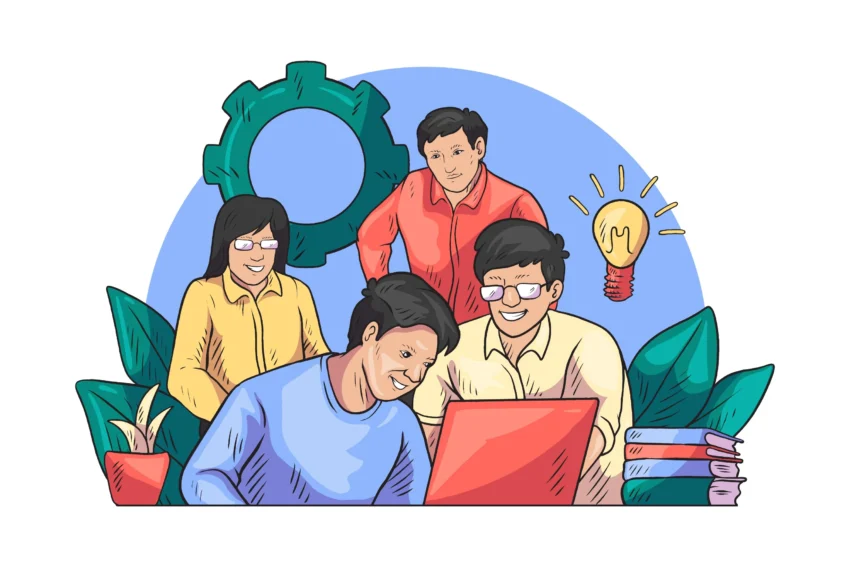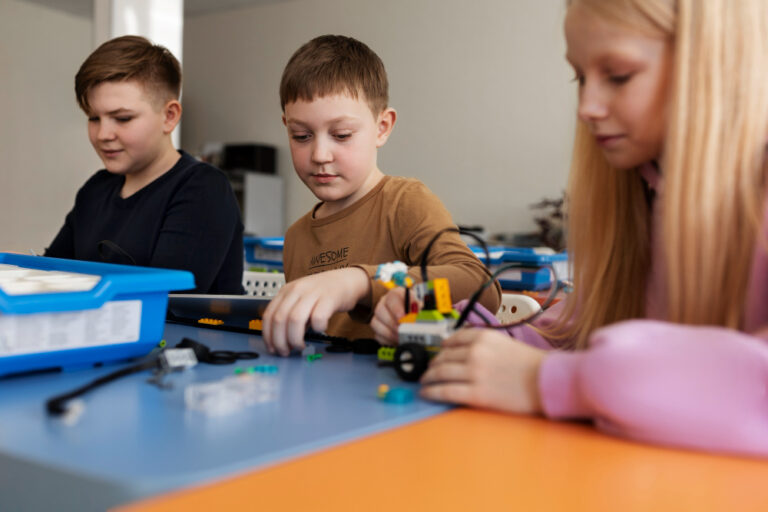Team Building STEM Activities serve as a powerful tool to foster collaboration, creativity, and problem-solving skills among individuals involved in the Science, Technology, Engineering, and Mathematics (STEM) fields. These activities are extremely carefully designed to encourage team members to work commonly towards a common objective while leveraging their unique skills and knowledge.
Whether it’s figuring out a challenging code in a timed contest, constructing an efficient wind turbine, or understanding the complex phenomena of communities, these activities provide hands-on experience and promote a deep understanding of STEM concepts. Moreover, these activities also facilitate communication, leadership, and teamwork skills, which are as critical as technical expertise in modern STEM fields. They provide an exciting and engaging platform for individuals to grow do well and innovate while learning the importance of collaboration and mutual respect.
How team building STEM activities benefit kids?
Team building STEM activities play an important role in children’s intellectual and emotional development. These activities blend fun with learning, fostering an environment where kids can explore, innovate, and grow. They help in shaping children’s problem-solving skills, collaboration, creativity, and leadership potential. Further, STEM activities can also instill traits like resilience, adaptability, and a growth mindset among young minds.

- Enhances Problem-Solving Skills: STEM activities expose kids to real-world problems and allow them to devise innovative solutions, thereby enhancing their problem-solving skills.
- Promotes Teamwork: These activities require participants to work together, which fosters teamwork and collaboration.
- Boosts Creativity: STEM activities challenge kids to think outside the box, thereby stimulating their creative thinking.
- Develops Leadership Skills: These activities often involve roles that require leading a team and helping kids develop leadership skills.
- Instills Resilience: The challenges involved in STEM activities teach kids to be resilient, as they learn from failures and persevere to find solutions.
- Encourages Adaptability: These activities often involve unexpected changes, teaching kids the importance of adaptability.
- Fosters a Growth Mindset: Through the successes and failures experienced in these activities, kids understand that effort and learning from mistakes lead to growth and improvement.
Planning and Implementing Team Building STEM Activities
When planning and implementing team-building in STEM activities, several key steps should be followed to ensure a successful and Improving experience for the children involved.

- Identify Goals: Begin by identifying what you hope the kids will learn from the activity. This could be developing problem-solving skills, fostering teamwork, and enhancing creativity, among other things.
- Choose Appropriate Activities: Choose activities that align with your goals and are suitable for the age and skill level of the children. The activities should be challenging but achievable, and should perfectly have real-world applications.
- Prepare Materials: Gather all the necessary materials needed for the activity. Make sure there are enough materials for all participants.
- Form Teams: Divide the kids into teams. It can be beneficial to mix children of different skill levels and personalities to promote diversity and peer learning.
- Lead the Activity: As the facilitator, guide the children through the activity without giving away solutions. Encourage open communication, cooperation, and creative thinking within teams.
- Monitor Progress: Monitor each team’s progress, offering guidance when necessary. It’s important to ensure that all children are actively involved and contributing.
- Review and Reflect: After the activity, hold a discussion session. Allow the kids to share their experiences, what they learned, and what they found challenging. This reflection process is crucial for reinforcing the lessons learned from the STEM activity.
Planning and implementing team-building STEM activities in a thoughtful and structured manner can significantly enhance the learning outcomes and overall experience for the children involved.
Importance of team building STEM activities in education
Team building STEM activities are instrumental in education as they equip students with essential skills needed in the 21st century. These activities feed and care for a passion for science, technology, engineering, and mathematics, fields that are at the heart of modern society. They facilitate active learning, where students are directly involved in practical projects, learning by doing rather than passive absorption of knowledge. By encouraging collaboration, these activities foster social skills, develop communication abilities, and cultivate leadership potential.

They also instill critical thinking and problem-solving skills, as students are often required to overcome challenges and find solutions collectively. Moreover, team-building STEM activities can help to bridge the gender and diversity gap in STEM subjects by providing an inclusive environment where all students, regardless of their background, are encouraged to contribute and excel. In a nutshell, these activities are not just about learning STEM concepts, but about preparing students for future careers and life in an increasingly technology-driven world. Overall, incorporating team-building STEM activities into education is a valuable and effective way to develop well-rounded and capable individuals equipped with essential skills for future success.
Assessing the Impact of Team Building STEM Activities
Assessing the impact of team building STEM activities is a critical step in ensuring their effectiveness and value. There are several ways to measure this impact:
- Observation: Facilitators can observe the children during the activity to assess their level of engagement, cooperation, problem-solving, and creativity. Observations can provide insights into how well they are applying STEM concepts and working as a team.
- Surveys and Feedback Forms: Post activity, participants can be asked to fill out surveys or feedback forms. These could include questions about what they learned, what they enjoyed or found challenging, and how they felt about their team’s performance.
- Self-Assessment: Encourage children to self-assess their performance. This promotes deep thinking and helps them identify areas of strength and areas requiring improvement.
- Performance Metrics: Depending on the activity, specific performance metrics can be used such as the time taken to complete the activity, the number of attempts made before finding a solution, or the quality of the final product or solution.
- Follow-up Activities: Conducting follow-up activities or tests can help assess the retention and application of the knowledge and skills acquired during the STEM activities.
Assessment should ideally be a continuous process, conducted at different stages of the activity – before, during, and after to evaluate the progress being made and make necessary adjustments to enhance the learning experience.
Conclusion
In a rapidly advancing world, the importance of team-building STEM activities cannot be overstated. These activities have emerged as a powerful tool in molding the minds of young learners, equipping them with the skills necessary to excel in a future driven by science and technology. They foster an environment of learning that is not only rich in knowledge but also abounds in practical skills such as teamwork, problem-solving, and critical thinking.
Above all, these activities help cultivate a lifelong curiosity and passion for STEM among learners, opening doors to endless possibilities for their future. It is, therefore, crucial that educators and parents alike embrace the value of team-building STEM activities and integrate them into children’s learning processes. For, in doing so, we invest not only in the individual growth of these learners but also in the growth of our society and future at large.






